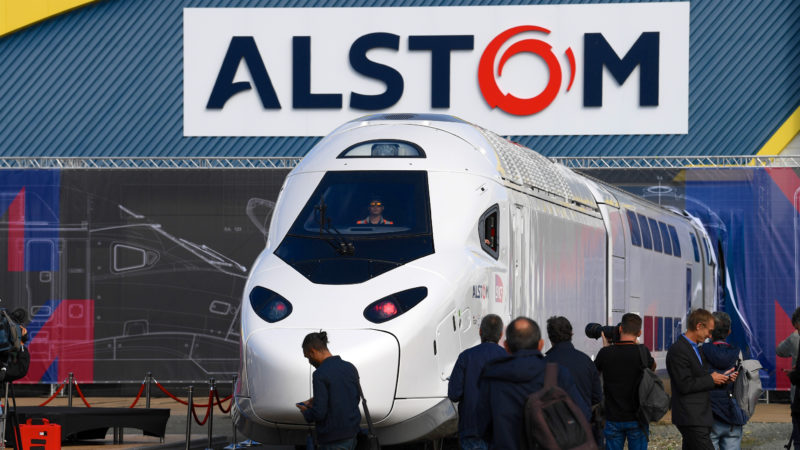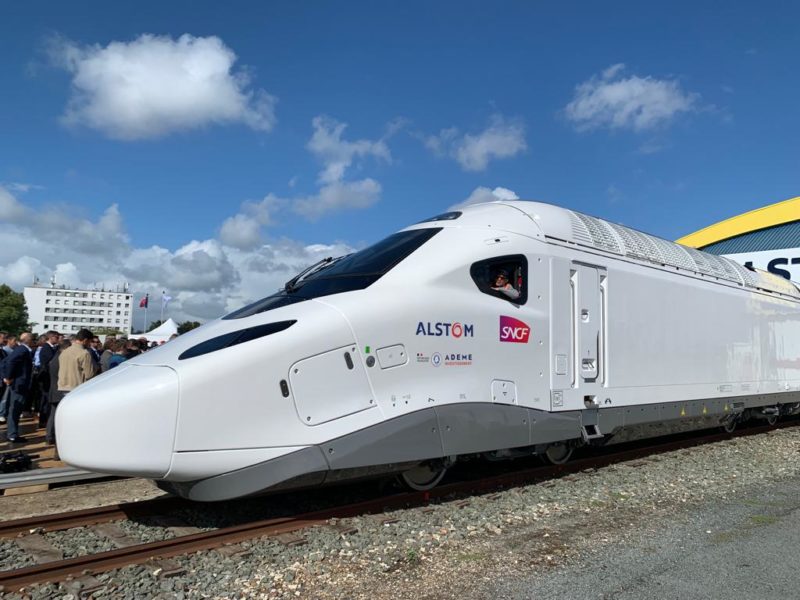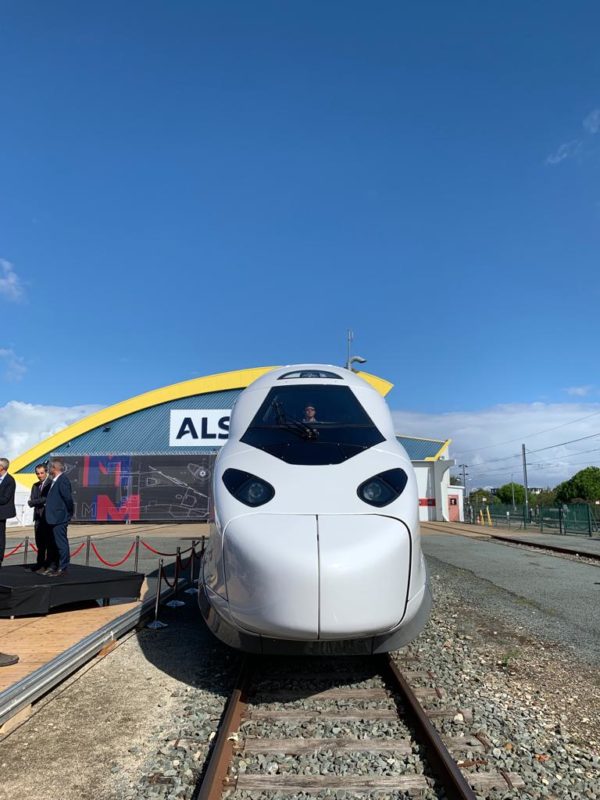The next generation Alstom TGV – the TGV M was unveiled recently at Alstom’s La Rochelle workshops. Let us take a look.

The TGV M order is for 115 trainsets – split between 100 domestic and 15 international services. These trains will be used for both INOUI and OUIGO TGV services (both SNCF-owned).

Alstom’s TGV M features a lot of new features including:
- New modularity features to allow a trainset to be scaled to market size (eg, 7, 8 or 9 cars), as well as quick swap changes that can transform a 1st class space into a 2nd class space and vice versa, to reconfigure the interior by removing or adding seats, bicycle or luggage spaces, etc. The default configuration will be 9 cars.
- A capacity increase of 20% – to allow for 40 seats compared to the current maximum of 634.
- Reducing the carbon footprint, with 97% of the train being recyclable, and a 32% reduction in CO2 emissions.
- Accessibility options for all passengers
- Access to evolving connected services that meet passengers’ needs, such as on-board Wi-Fi, as well as complete information in real-time in the various areas of the train
- Real-time sensors to optimize maintenance and availability,
In the train cabin, there will be innovations on board that will improve passenger comfort and service. In the passenger lounges, the interior design has been designed to promote rest and a muted atmosphere, for a serene and peaceful journey. Elsewhere, social areas have been designed for those who wish to enjoy themselves with friends or family.
The windows have been enlarged for a panoramic view of the landscape. The lighting will adapt to the intensity of the natural light in the train. All seats, designed for optimal comfort, will have connectivity features, offering everyone Wi-Fi.
Finally, the bar of this new TGV has been completely redesigned to offer a new experience.
Accessiblity
TGV M is the first TGV which, from the outset of its design, has been designed in close collaboration with associations for people with reduced mobility (notably wheelchair users and the visually impaired). It will be the first TGV to offer fully independent access to the train. A pivoting lifting platform will allow wheelchair users to access the train independently, right up to the room reserved for them, and a sound system to locate the doors will guide visually impaired people when they board.
The ongoing work
There is a lot of supporting work going on, such as training, depot adaption, station adaption and digitisation of procedures, cabin and operation.
Ten of the sixteen Alstom sites in France are involved in the design of the new train, supporting 4,000 new jobs:
- Belfort for the locomotives
- La Rochelle for the carriages (studies, industrialization, purchasing, manufacturing and testing of passenger carriages), logistical and service support, and project management
- Villeurbanne for the computerized control and command system, passenger information and on-board equipment
- Ornans for the engines
- Le Creusot for the bogies
- Tarbes for traction
- Toulouse (COE electrical) for the electrical circuits
- Petit Quevilly for the transformers
- Saint-Ouen for design, signalling
- Valenciennes for the study of the interior design elements
In total, 4,000 jobs will be generated by this project in the French rail industry.
Onto testing
Whilst the first set has rolled out of the La Rochelle factory, there is plenty to be done over the two years as it is put through its paces.
The next major step will be the dynamic test phase at 200 km/h in Velim (Czech Republic) by the end of 2022. This opens the first chapter in a long period of testing for this high-speed train.
Seating comfort will be tested e tested by a representative sample of people to gather their feelings and make adjustments if necessary.
The car dedicated to people in wheelchairs has several innovations. Work is continuing with the associations to finalize the technical adjustments and the choice of signage. Attendants and maintenance teams are also involved in this process, to identify changes in the way they work.
And finally – the bar car is getting a complete redesign. With that, comes work to adapt the catering offer to this new space.
Advancing onwards

The TGV M is a flagship project for Alstom, as it continues the tight work and collaboration between long-time partner SNCF to make a train for their needs.
More than that, there is work on modularity, which should help sell this product in markets other than France (with the high-speed market split between Alstom, Talgo, Hitachi and Siemens).
There is going to be a lot of work to commission the new types, with them expected to enter service in 2024, with deliveries continuing to 2033.
It’ll be interesting to see these in action, as well as see who else could take these trains on.
For example, there is a high-speed pan European train operator that is crying out for more rolling stock at the moment…
Welcome to Economy Class and Beyond. Your no-nonsense guide to network news, honest reviews, featuring in-depth coverage, unique research, as well as the humour and madness I only know how to deliver.
Follow me on Twitter at @EconomyBeyond for the latest updates! You can follow me on Instagram too!
Also, remember that we are part of the BoardingArea community, bringing you the latest frequent flyer news from around the world.